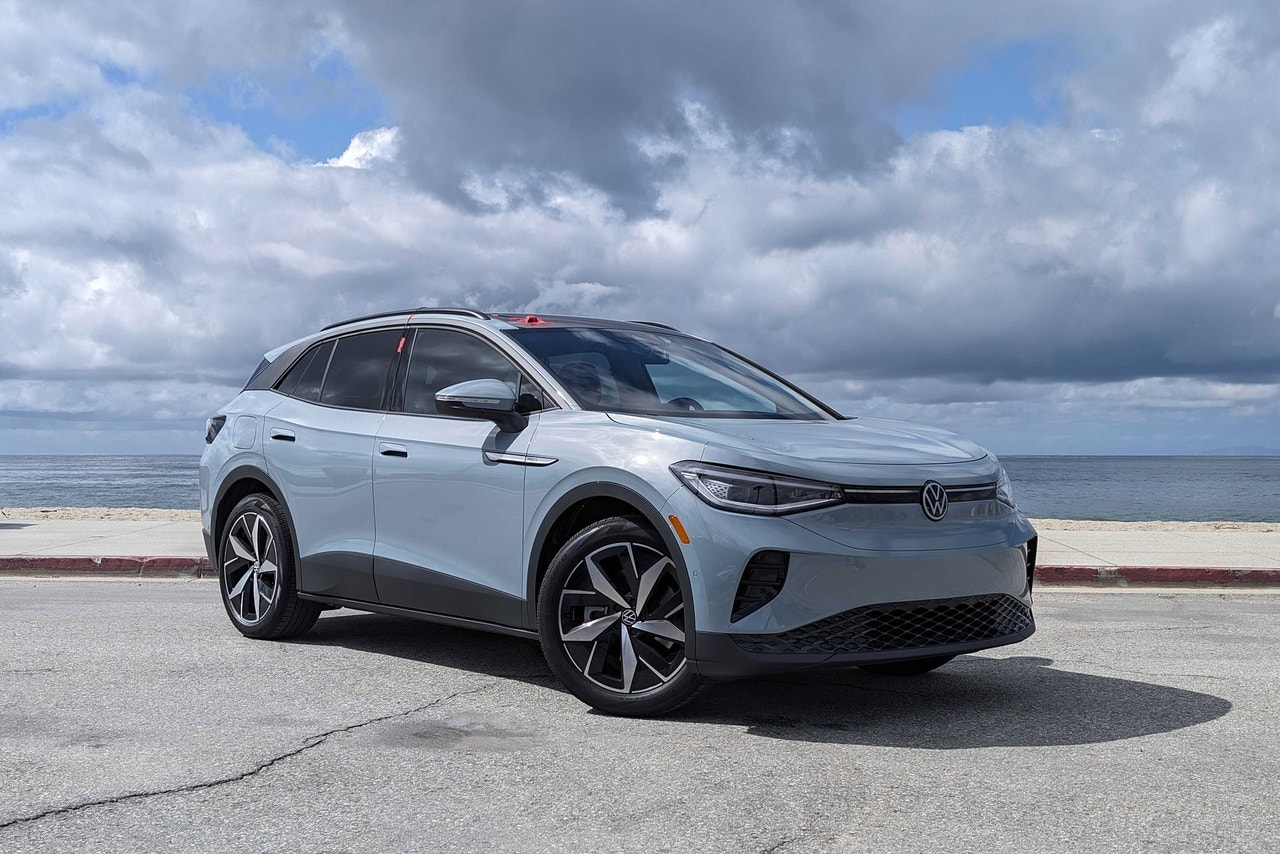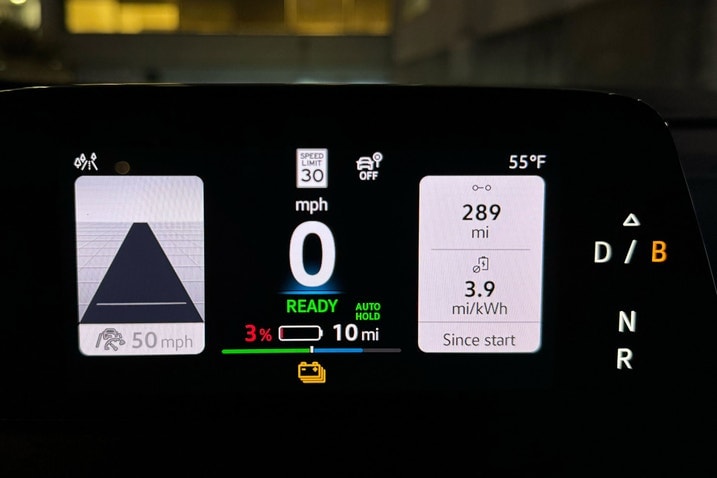- We put the updated 2024 Volkswagen ID.4 through the Edmunds EV Range Test.
- At the end of our test, we observed 299 miles of range — an 8-mile improvement over the EPA estimate.
- The new ID.4 is much more powerful than before, and hits 60 mph a full 1.5 seconds quicker in our testing.
Updated VW ID.4 EV Is Much Quicker and Goes Farther in Our Testing
The more powerful 2024 ID.4 Pro S hits 60 mph in 6.1 seconds and goes 299 miles on a full charge
The Volkswagen ID.4 electric crossover got a few meaningful updates for the 2024 model year, including a new performance drive unit that, according to the automaker, offers improvements in both power output and driving range. We'll get to the power updates in a minute, but in order to test VW's range claim, we put a single-motor 2024 ID.4 Pro S through the Edmunds EV Range Test to see what this updated EV can manage in real-world driving.
At the end of our test — which occurred on a sunny March day with a temperature of 67 degrees Fahrenheit — the single-motor 2024 ID.4 Pro S managed 299 miles of Edmunds-certified range. That's an increase of just 8 miles (or 2.8%) compared to the EPA rating of 291 miles. We also saw a consumption figure of 29.8 kWh per 100 miles — an 0.7% decrease compared to the EPA's estimate of 30.0 kWh per 100 miles.
For some context, the last time we put a single-motor ID.4 through our range test was in 2021, where we tested a rear-wheel-drive ID.4 Pro (non-S). At the time, the EPA rated that model at 260 miles, and we saw 288 miles in our testing. That's an increase of 10.8%. We saw efficiency numbers of 29.3 kWh per 100 miles in that 2021 ID.4 Pro test — a 13.9% decrease over the EPA's estimate of 34.0 kWh per 100 miles.
What's it all mean? Well, while the 299-mile number might not seem like a staggering improvement, it's interesting that the gap is closing between our observed range and the EPA's rating. Our consumption data nearly matches the EPA's estimates, too. That's good news for shoppers; the more accurate the EPA's figures are, the better.
How we range test
The Edmunds EV Range Test methodology is sacrosanct around these parts. It's how we can ensure that all EVs get a fair shake while emulating real-world driving conditions. Our test targets an average speed of 40 mph, with a 60/40 split of city/highway driving for the entire route.
EVs are tested in their most efficient drive modes, as long as they don't produce maddeningly slow acceleration, with regenerative braking set to its maximum strength. We also stay within 5 mph of the posted speed limit whenever possible. Cars start with a 100% state of charge and are brought back to headquarters with 10 miles of range or less, for safety precautions.
More power (for some models)
ID.4s equipped with the larger 82-kWh battery pack have a new performance drive unit, and a rear-wheel-drive Pro S like ours produces 282 horsepower and 402 lb-ft of torque. That's a mega increase over the prior single-motor ID.4, which made 201 hp and 229 lb-ft. The rear-drive 2024 ID.4 with the smaller 62-kWh battery continues to offer 201 hp and 229 lb-ft.
In our performance testing, the 2024 ID.4 Pro S laid down a 0-60 mph time of 6.1 seconds and a quarter-mile time of 14.4 seconds at 96.0 mph. That's a noticeable improvement over the last rear-wheel-drive ID.4 we tested, which took 7.6 seconds to hit 60 mph and 15.8 seconds to run the quarter mile at 85.9 mph. We can feel this result in the real world, too; the ID.4 is much more confident when accelerating onto the freeway.
Adding all-wheel drive to the ID.4 Pro S ups output to 330 hp but keeps the torque figure the same. We don't yet have testing data for this variant, but VW estimates a 0-60 time of 4.9 seconds.
Edmunds says
The Volkswagen ID.4 continues to overperform compared to its EPA estimates, and the added acceleration oomph is a bonus. We'll be curious to see if other trim levels manage more than a 2.8% improvement over the official EPA rating.



 by
by 
